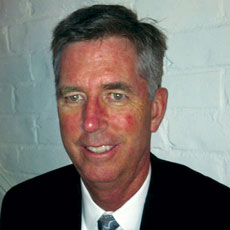
Long-term care communities are well versed about the negative effects inefficient, inaccurate and improper medication management can have on residents. In assisted living homes, residents take on average 7.6 medications daily, plus 2.3 over-the-counter drugs, according to the “2009 Overview of Assisted Living,” a collaborative research project between AAHSA, ASHA, ALFA, NCAL and NIC. This makes it especially important for communities to have the resources and personnel in place in order to provide the expert care that residents and their families trust.
The key to successful medication management is improving processes on multiple fronts so that staff members are more comfortable, confident, efficient and effective. Here are four tips to help drive success:
Utilize Experts to Check and Double Check: Many assisted living residents arrive at a community with a medication profile that includes several prescriptions from multiple physicians in different practice areas. A pharmacy with a focus in assisted living geriatric care can serve as the central point to help prevent polypharmacy, ensuring a resident’s medication regimen is safe and effective even before the med pass. This includes:
- Identifying potential drug interactions
- Recommending discontinued use of certain medications that might be harmful for elderly residents — such as off-label use of antipsychotics
- Reviewing patient history of meds given “as needed” to determine if there is a particular trend and if the drug provided the desired outcome
- Examining labs to see how a resident’s health is being impacted by the medication regimen
- Reviewing each resident’s medication profile monthly is an important verification process and helps staff know that the drugs they are administering are safe.
Embrace the Latest in Healthcare Technology: While adoption rates for technology like eMARs have certainly grown, some communities hesitate, concerned these tools are too difficult or costly to implement. However, eMAR systems that interface directly with a pharmacy provider can save communities an estimated $25 to $40 per month, per resident by increasing med pass efficiency. They also improve accuracy by removing the potential for error when MARs are hand transcribed. Not only do web-based eMAR programs enable caregivers to access patient data anytime, but they also make ordering medications simpler, creating a portable medication profile with previous history.
Other technology offerings include automated medication packaging, which reduces errors and simplifies dispensing, and barcoding technology to guarantee that medications are going to the right patient at the right time.
Choose One Partner Who Can Support Your Individual Community: Unlike in skilled nursing facilities, residents in assisted living communities have the right to choose their own pharmacy. Transitioning to a community can be stressful, so often residents seek familiarity by keeping their old pharmacy, yet also wanting the community to help manage and pass their medications. But multiple pharmacies in one community can lead to medication errors, reorder issues, stress on staff and unnecessary labor costs. This also makes it difficult to implement technology such as eMARs.
An assisted living community should establish a relationship with a single preferred pharmacy provider who can help their residents utilize its services in order to solve many of the issues related to the complicated medication management process. Pharmacies specializing in assisted living will provide dedicated customer service and comprehensive resources – including sessions for residents and their families to learn more about the pharmacy and easy-to-access local billing support – thus encouraging the transition to the preferred provider.
It is important to choose the right pharmacy for each individual location. Since there is no cost benefit to choosing a group-wide provider, the decision comes down to which pharmacy can offer the best individualized customer service to each home. When the community forms a partnership with a preferred provider that understands its unique needs, its staff members will receive the tools to better perform accurate and efficient medication management, and residents will be better served.
Offer Ongoing Education for Staff: As the elderly population continues to increase, more emphasis will be placed on aging care, leading to new techniques, technologies and regulations. Assisted living staff may struggle to keep up with the ever-changing industry while balancing daily job responsibilities. By working with the pharmacy provider to hold regular training sessions and continuing education courses, communities further expertise and understanding across the organization.
Employee growth and retention are vital in any business but especially in customer-service driven industries like long-term care. A friendly face providing a health service can be a great source of comfort for assisted living residents and their families. Well-educated staff members are more effective at and confident in their positions and thus more likely to be satisfied in their jobs. This means fewer turnovers and a more stable community team. Through open communication, facility leaders learn about specific issues staff members are facing and then work with the pharmacy to tailor educational programs to focus on these areas of concern.
Many make the transition to assisted living because they are struggling with managing their own medications. Thus the community’s ability to provide this service in a helpful, safe way is a tremendous relief and asset to residents and their families. Errors can occur in multiple places during medication distribution, but by collaborating with a pharmacy provider, an assisted living community takes an active, innovative role in mitigating these issues and in bettering its quality of care.
Kendall Forbes is the executive vice president of operations and sales at Guardian Pharmacy.




